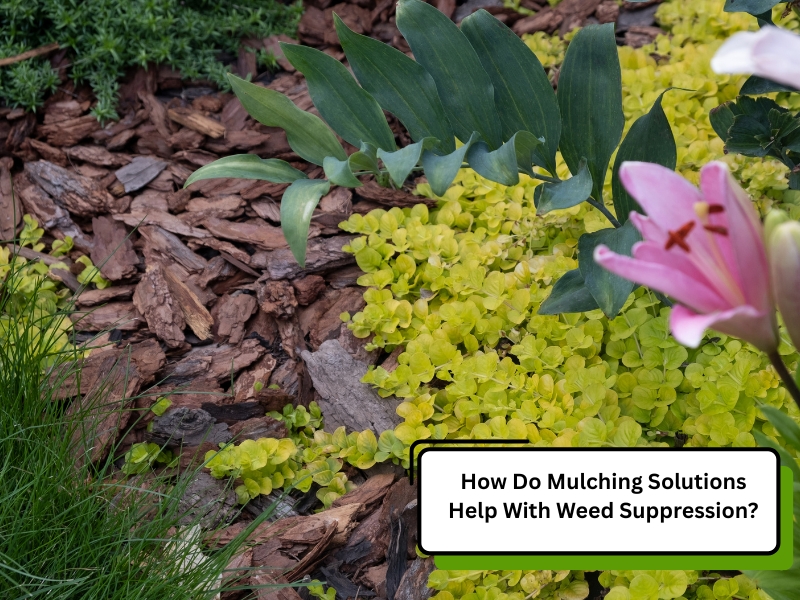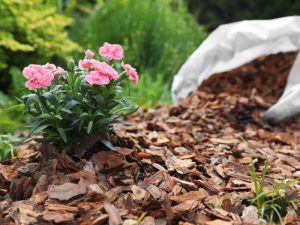Weed control remains one of the biggest challenges for home gardeners. Mulching offers a reliable way to suppress unwanted plant growth while improving soil health. However, not all mulch types perform equally, and application techniques vary depending on the goal. This article explores how mulching solutions work, why they’re critical for weed management, and the most effective methods for maintaining a tidy, healthy garden environment.
Why is weed growth a persistent issue in home gardens?
In most home gardens, weed growth feels never-ending. That’s because weeds are opportunistic—they grow fast, spread quickly, and thrive in environments with even the slightest disturbance.
- Weeds reproduce rapidly and can outcompete desirable plants
- Bare soil provides perfect conditions for seed germination
- Wind, animals, and mulch deliveries often bring in new seeds
- Irregular maintenance can allow small weeds to mature quickly
With sufficient light and moisture, dormant weed seeds germinate almost instantly. Frequent digging, watering, or composting can accidentally encourage weed activity, especially in untreated areas. Even a well-maintained garden is vulnerable if the soil remains exposed for long periods.
What happens when you don’t use mulch effectively?
When mulch is applied incorrectly—or skipped entirely—the results are rarely positive. Mulch serves several critical roles in garden health, and its absence often allows weeds to flourish.
- Thin or patchy mulch permits light to reach weed seeds
- Piling mulch too high around stems promotes rot
- Poor mulch types may retain too much moisture
- Weed seeds may sprout on top of loose organic layers
Applying mulch without a plan leads to inconsistent coverage, which can provide ideal pockets for weed establishment. Excessive mulching around plant bases can cause stem rot and attract pests. Selecting the wrong material may also backfire, especially if it doesn’t break down or offers poor light-blocking ability.
One practical approach involves using comprehensive mulching solutions to eliminate stubborn weeds, ensuring consistent application and correct materials for your garden type.
Can weeds damage plant health and soil balance?
Beyond appearance, weeds pose serious threats to soil and plant health. When left unmanaged, their impact extends deep below the surface.
- Compete directly with other plants for water, light, and nutrients
- Alter pH and microbial activity in the surrounding soil
- Produce chemicals that can inhibit nearby plant growth
- Encourage insect activity and diseases in crowded areas
Invasive species like couch grass or oxalis don’t just crowd garden beds—they affect how other plants absorb water and nutrients. Some weeds even release allelopathic compounds, which limit nearby plant development.
Preventing these issues often starts with harnessing the power of mulch for weed control, using organic or inorganic materials that limit exposure and resource competition.
How do mulching solutions disrupt weed growth cycles?
Weeds follow a predictable growth pattern—from seed dormancy to sprouting to spreading. Mulching interferes with this cycle in multiple ways.
- Reduces sunlight reaching weed seeds, stopping germination
- Creates a physical barrier to limit growth emergence
- Moderates soil moisture and temperature to discourage sprouting
- Improves soil structure over time, making it harder for weeds to root
Mulch cuts off the weed life cycle before it begins. A thick, consistent layer prevents light from penetrating the soil, smothering dormant seeds. Additionally, mulch stabilises the environment, dampening extremes in heat and water fluctuation that might encourage weed growth. This table outlines the weed-blocking efficiency of common mulch types:
Mulch Type | Organic or Inorganic | Weed Suppression | Longevity | Ideal Use |
Bark chips | Organic | High | 12–18 months | Shrubs and borders |
Sugarcane mulch | Organic | Medium | 6–9 months | Veggie gardens |
Landscape fabric | Inorganic | Very High | 3–5 years | Beneath gravel or pavers |
Rubber mulch | Inorganic | Very High | 5+ years | High-traffic areas |
Which mulching solutions work best for weed prevention?
Not all mulch types are equal. The best solution depends on garden use, local climate, and budget. Some mulches offer nutrient benefits, while others focus purely on weed suppression.
- Bark and hardwood chips are ideal for ornamental beds
- Straw or sugarcane mulch works well in vegetable patches
- Gravel or rubber mulch suits walkways and driveways
- Fabric mulch excels under hardscapes or container areas
Choosing mulch based solely on appearance can lead to long-term problems. Organic mulches enrich the soil but require regular replenishment. Inorganic types are durable and low-maintenance, though they lack nutrient benefits.
Making an informed choice often starts with understanding how thick mulch should be applied to your garden, which varies by plant type and local conditions.
How do organic mulching solutions differ from synthetic mulch?
Organic and synthetic mulches perform different roles. Each has advantages and drawbacks, particularly regarding sustainability and effectiveness.
- Organic mulch decomposes and enhances soil quality
- Synthetic mulch lasts longer but requires more precise placement
- Organic types promote biodiversity below the surface
- Synthetic options are better at blocking persistent weeds
Organic options include bark, straw, compost, and grass clippings. These biodegradable materials support the garden ecosystem while offering moderate weed control. However, they do break down and may need replacement every season.
Synthetic mulches like rubber, plastic, or geotextile fabric are designed to maximise weed suppression and reduce garden labour. While they don’t nourish the soil, they are effective in highly controlled environments.
Is layering mulch the secret to a weed-free garden?
Layering is a strategic way to boost mulch’s effectiveness. Instead of relying on one material, combining two types allows for more comprehensive weed management.
- Start with a light-blocking layer like cardboard or newspaper
- Add a top layer of wood chips, straw, or compost for stability
- Ensure mulch depth stays between 5–10 cm for best results
- Avoid placing mulch too close to plant stems or trunks
Layering helps address different needs—blocking sunlight from weed seeds below while providing a nutrient-rich surface on top. This system also holds moisture better and resists displacement by wind or watering.
For gardeners aiming to refine their technique, Best practices for using mulch to suppress weeds effectively offer practical guidance on layering methods, materials, and seasonal upkeep.
Final thoughts
Mulching is more than just tossing bark around your backyard. Done right, it transforms your garden into a low-maintenance, weed-resistant haven. Layering is key, whether you prefer organic or synthetic, and correct depth matters more than you’d think.
Whether the goal is nutrient-rich soil or low-maintenance landscaping, mulching remains one of the most effective strategies. Appropriately layered and maintained throughout the seasons, mulch forms a strong defence against most invasive weeds.
Still not sure what works for your garden? Discuss your garden needs with A1 Gardening & Landscaping Sydney.



